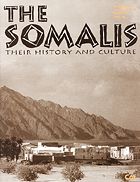|
Before
the civil war,the population of Somalia was estimatited at
7.7 millions people.it is believed that about 400,000 people
died of famine or disease or were killed in the war,and nearly
45% of the population was displaced inside Somalia
or fled to neighbouring countries,to the Middle East,or
to the West.
 Somalia’s
population is mostly rural.Nearly 80% of the people are pastoralists,agriculturalists,or agropastoralists.Except for small number of somalis who rely on fishing,the
rest of the population are urban dwellers.Somalia’s chief
cities and towns are Mogadishu, (capital),Hargeisa,Borama,Burao,Bossasso
Berbera,Marka,Brava,Baidoa, and Kismayo.In the past frew year,civil
war and famine have changed urban demographics,as hundreds
of thousands of displaced somalis have poured into the cities
seeking sanctuary and relief. Somalia’s
population is mostly rural.Nearly 80% of the people are pastoralists,agriculturalists,or agropastoralists.Except for small number of somalis who rely on fishing,the
rest of the population are urban dwellers.Somalia’s chief
cities and towns are Mogadishu, (capital),Hargeisa,Borama,Burao,Bossasso
Berbera,Marka,Brava,Baidoa, and Kismayo.In the past frew year,civil
war and famine have changed urban demographics,as hundreds
of thousands of displaced somalis have poured into the cities
seeking sanctuary and relief.
Ethnically and culturally, Somalia
is one of the most homogeneous cuntries in Africa.Somalia
has its minorities:There are people of Bantu descent living
in farming villages in the south,and Arab enclaves in the
coastal cities.A small number of europeans,mostly italians,live
on farms in the south.But the great majority are ethnic somalis
who speak dialects of the same language,somali,and who practice
the same religion,Islam.
 In the land of sparse rainfall,more
than half of the population are pastoralists or agropastoralists
who raise camels,cattle, sheep and goats.There are farmers,mostly
in the south and nortwest,and in recent years a new urban
group of gouvernement workers,shopkeepers, and traders has
emerged,but it is the nomadic way of life,with its love of
freedom andopen spaces,that celebrated in somali poetry and
folklore. In the land of sparse rainfall,more
than half of the population are pastoralists or agropastoralists
who raise camels,cattle, sheep and goats.There are farmers,mostly
in the south and nortwest,and in recent years a new urban
group of gouvernement workers,shopkeepers, and traders has
emerged,but it is the nomadic way of life,with its love of
freedom andopen spaces,that celebrated in somali poetry and
folklore.
Clans
constitute the heart of Somalia society,and
the challenger facing modern Somalia is how to unify a country
whose people often give greater allegiance to lineage than
to nation .It is important to note,however,that while
somalis have traditionally fought among themselves;their greater
edentity as somalis takes hold in front of strangers.
 Somali
is spoken throughout the eastern part of the Horn of Africa
in the countries of Somalia and the self-declared Republic
of Somaliland, as well as in neighbouring areas of Djibouti,
Ethiopia and Kenya. There are also many Somali communities
in other parts of Africa, the Middle East and America as well
as in Europe and the UK where cities such as London and Cardiff
have large Somali communities. Somali
is spoken throughout the eastern part of the Horn of Africa
in the countries of Somalia and the self-declared Republic
of Somaliland, as well as in neighbouring areas of Djibouti,
Ethiopia and Kenya. There are also many Somali communities
in other parts of Africa, the Middle East and America as well
as in Europe and the UK where cities such as London and Cardiff
have large Somali communities.
The
Somalis have been described as a
nation of bards and indeed oral poetry plays
a central role in all aspects of Somali life such as watering
camels and political debate. The wide range of activities
in which poetry is involved is reflected in the diversity
of genres of poetry differing in their subject matter and
stylistic characteristics. In recent decades musical accompaniment
has played an increasingly important role in certain types
of poetry, and theatre has become an imporant art form incorporating
poetry.
 The
roots of the Somali language and culture have much in common
with other Cushitic peoples of the Horn of Africa, such as
the Oromos and Afars. Islam has, however, been one of the
central formative processes of Somali history with the vast
majority of Somalis being professed Muslims, and this influence
is naturally to be felt in the language which contains a fair
amount of Arabic vocabulary. In 1972 the then government of
the Somali Republic declared Somali to be the national language
of the country and an official orthography was introduced
based on the Roman alphabet. Following this, much oral literature,
both poetry and prose, was collected and written down and
a new written literature quickly developed. The
roots of the Somali language and culture have much in common
with other Cushitic peoples of the Horn of Africa, such as
the Oromos and Afars. Islam has, however, been one of the
central formative processes of Somali history with the vast
majority of Somalis being professed Muslims, and this influence
is naturally to be felt in the language which contains a fair
amount of Arabic vocabulary. In 1972 the then government of
the Somali Republic declared Somali to be the national language
of the country and an official orthography was introduced
based on the Roman alphabet. Following this, much oral literature,
both poetry and prose, was collected and written down and
a new written literature quickly developed.
|

